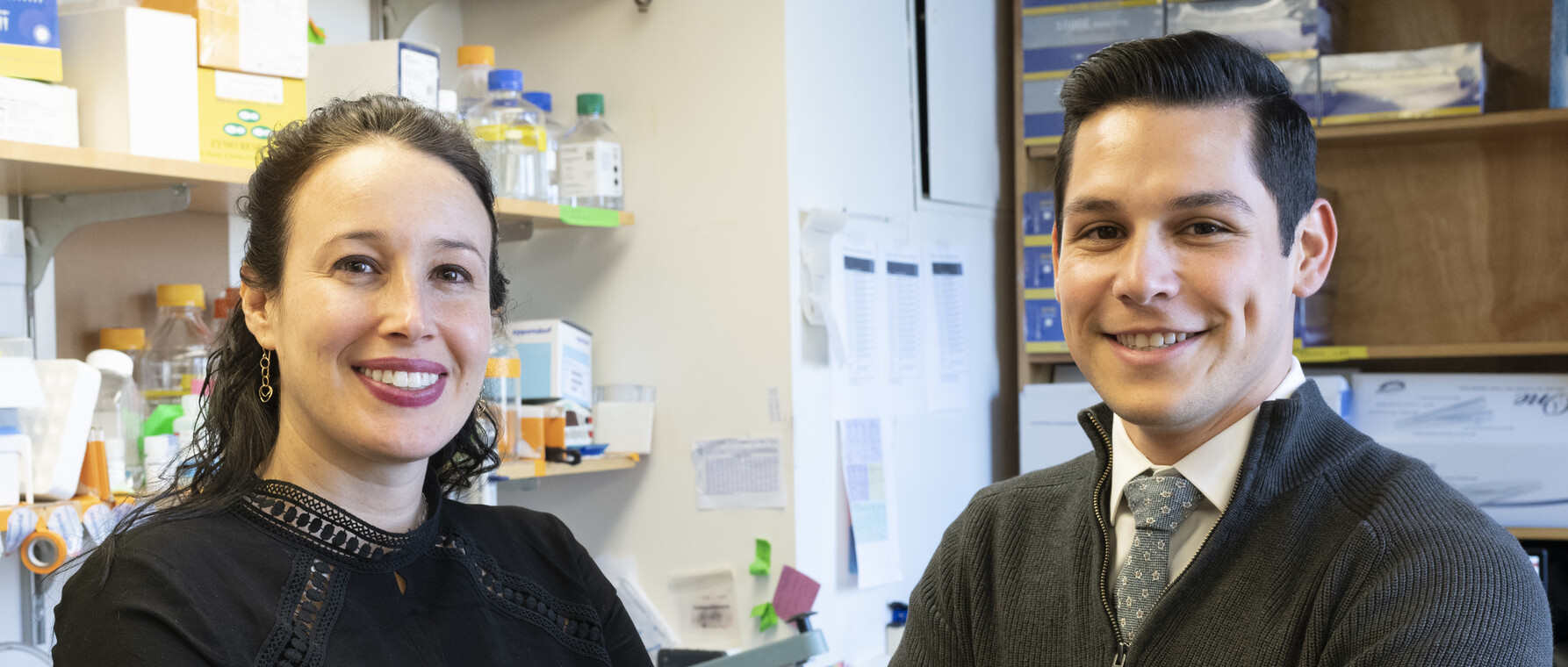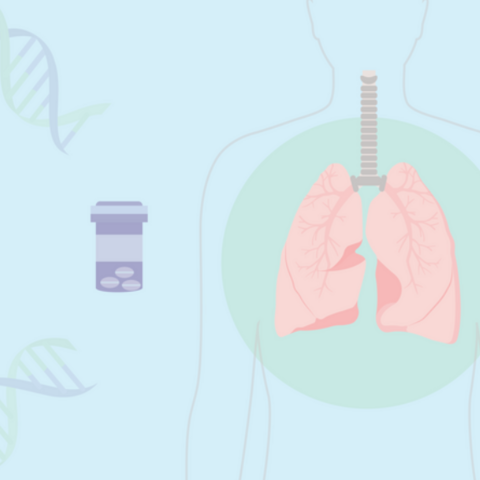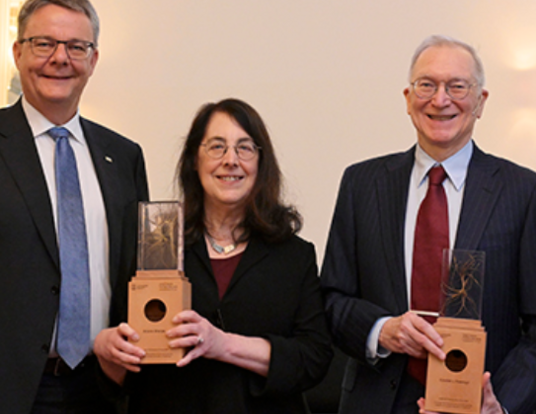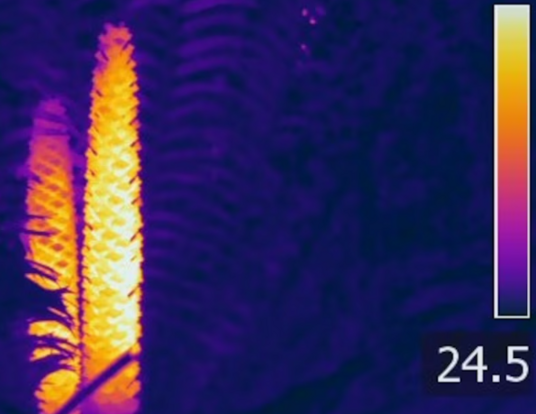A Critical Understanding
How Freddy Valencia’s research with Professor Cigall Kadoch uncovered an elusive molecular mechanism

When Alfredo (Freddy) Valencia learned that mutations in a single family of proteins caused a fifth of all cancers and more than half the known cases of a rare developmental disability syndrome, the fact hit close to home. Valencia’s sister has a severe intellectual disability.
Valencia, a PhD student in chemical biology, wanted to know how a particular protein—one of several that help restructure the architecture of DNA—could fail with such devastating consequences. His results, published in the journal Cell in November, provide insight into a host of diseases and a potential first step toward new treatments.
Altered Genes
Inside every one of our 40 trillion cells, more than two meters of genetic material are packed into nuclei one-tenth the width of a human hair.
DNA needs to be compactly stored, but also accessible to the cell’s transcription machinery. In the process of transcribing DNA’s genetic blueprint to create the proteins that comprise each cell and tissue type in the human body, genes are dynamically switched on and off. Studies of disease genomes have uncovered strikingly high mutation rates in the molecular machinery that accesses tightly coiled chromatin—genetic material made up of DNA and proteins.
Cigall Kadoch is an assistant professor of pediatric oncology at Dana-Farber Cancer Institute and an affiliated faculty member in the Blavatnik Institute Department of Biological Chemistry and Molecular Pharmacology at Harvard Medical School. Kadoch wants to understand exactly how assemblages of proteins called chromatin remodeling complexes perform critical functions during DNA replication and RNA transcription. Key players in this process are a family of proteins known as BRG1/BRM-Associated Factor or BAF complexes.
Mutations within the BAF complex—one of several such regulatory complexes found in mammals—are implicated in more than 20 percent of all human cancers and more than 60 percent of cases of Coffin-Siris Syndrome (CSS), a rare genetic disorder that causes developmental delays and other symptoms. Yet, Kadoch says, “we don’t know how the puzzle pieces fit together in the complexes. How are they assembled in the first place? How do mutations affecting the complexes change complex functions and change which genes they go to and activate across the genome?”
What Kadoch does know is that in cancer, autism spectrum disorders, and other diseases, genes are switched from their normal, healthy state to a disease state. Understanding how flawed architecture within chromatin complexes turns genes on or off would be revolutionary. “We could hypothetically identify novel therapeutic strategies to target a broad range of human maladies,” Kadoch says.
Absent Interaction
Born and raised in Santa Ana, California, to parents who immigrated from Mexico, Valencia is the youngest of five and the first in his family to go to college. At Pitzer College, an advisor encouraged him to pursue a career in science. Because his sister Annabel, five years his senior, struggled with a developmental disorder since birth, he initially thought he would study neuroscience.
Soon after arriving at the Graduate School of Arts and Sciences, Valencia was casting around for a focus of study when he heard Kadoch speak about a largely unstudied component of the BAF complex. He was intrigued by the idea that he could help uncover something relevant to human health, specifically neurodevelopmental disorders. “Growing up with my sister was one of my driving forces: to try to understand the underlying mechanisms resulting in developmental disorders,” he says.
One of the first graduate students to join Kadoch’s lab, Valencia struck her as “extremely talented,” she says. She pointed him to recent research about BAF47, which seemed to be the culprit behind many cancers, including a highly aggressive pediatric cancer, and CSS. “When you see such a stark, obvious pileup of mutations in one little region of a protein, you become very excited as a scientist because it offers an opportunity to dissect the function and the contribution of that specific region,” she says.
Armed with an arsenal of biochemical and genomic tools and human cells in which he could introduce CSS-associated mutations, Valencia set out to find out how BAF47 performed in the larger BAF complex when it was intact and what damage it caused when it was not. Valencia observed that both the faulty BAF47 protein and the healthy versions had no problem targeting their sites on chromatin. Surprised by this, Valencia said to himself. Okay, perhaps the healthy version and the mutant versions are doing the same thing.
But while the mutated BAF47 protein found its way to its proper sites on DNA, Valencia saw that once it was there, it didn’t actually do its job of “opening” DNA to make the tightly packed genetic material more accessible to transcription and, therefore, genes were not activated as they should be. To find out why, Valencia and Kadoch compared the binding ability of healthy BAF47 to BAF47 containing CSS-associated mutations. Valencia discovered that the interaction between BAF47 and nucleosomes was nearly absent in the mutants.
“Seeing that the healthy or normal version of BAF47 could bind to the nucleosome, whereas the mutant versions weren’t able to, was one of the most exciting discoveries,” Kadoch says. “It was so clear, and also incredibly surprising, as it revealed for the first time a direct interaction surface between a member of BAF and the nucleosome, which had remained elusive for decades.”
This region, Kadoch recognized, was actually a linchpin for the entire BAF complex. The mutations that Valencia was investigating disrupt a section of BAF47 critical for binding to the nucleosome, the chromatin structure containing tightly spooled DNA. The protein’s role was akin to a key: it docked into specific places on the chromatin that allowed the larger regulatory complex to do its job remodeling chromatin and launching the transcription process.
In another experiment testing whether this interaction between BAF47 and nucleosomes was also present in more primitive organisms, such as fruit flies and yeast, Valencia discovered for the first time that this interaction had actually occurred throughout millions of years of evolution.
“Freddy had not only discovered the mechanism behind why it’s so bad to have these mutations in this disease type, but also a critical piece of understanding as to how chromatin remodeling even works,” Kadoch says, noting that Valencia’s work has provided a new layer of fundamental understanding that has never been brought forth before. “If researchers can learn how to alter the function of these master regulatory complexes, we can modulate gene expression.”
Relevant Insights
CSS and other syndromes are characterized by symptoms that affect disparate parts of the body. The latest knowledge could enable researchers to alleviate some symptoms, perhaps by creating a sort of molecular “glue” to fix the broken interface. “As a kid, I remember my sister suffering from epilepsy, which was difficult for me to understand,” Valencia says. “Epilepsy has a higher prevalence in individuals with an intellectual disability. Understanding the way her condition developed, or at least its basic mechanisms, could inform future advances in therapeutic interventions for neurological conditions such as epilepsy.”
After the results were published in Cell, Dr. Gijs W. E. Santen, a clinical geneticist at the University of Leiden, reached out to Kadoch and Valencia. Although it’s still unknown how BAF47 mutations lead to the multiple symptoms of CSS, Santen says the results described in the paper will be of interest to parents of patients who struggle to understand exactly how mutations cause the disease. “The insights that this study provides are relevant to all diseases related to BAF complex dysfunction,” he says.
After Valencia graduates in May 2020, he hopes to embark on postdoctoral studies in which he can collaborate with geneticists such as Santen to further identify BAF complex mutations—and continue to illuminate the underlying cause and effect of conditions such as his sister’s.
“To actually have access to geneticists and patients,” Valencia says, “and to have the opportunity to understand such mechanisms in a way that impacts the lives of people is incredibly exciting for me.”
Photos by Molly Akin
Get the Latest Updates
Join Our Newsletter
Subscribe to Colloquy Podcast
Simplecast





